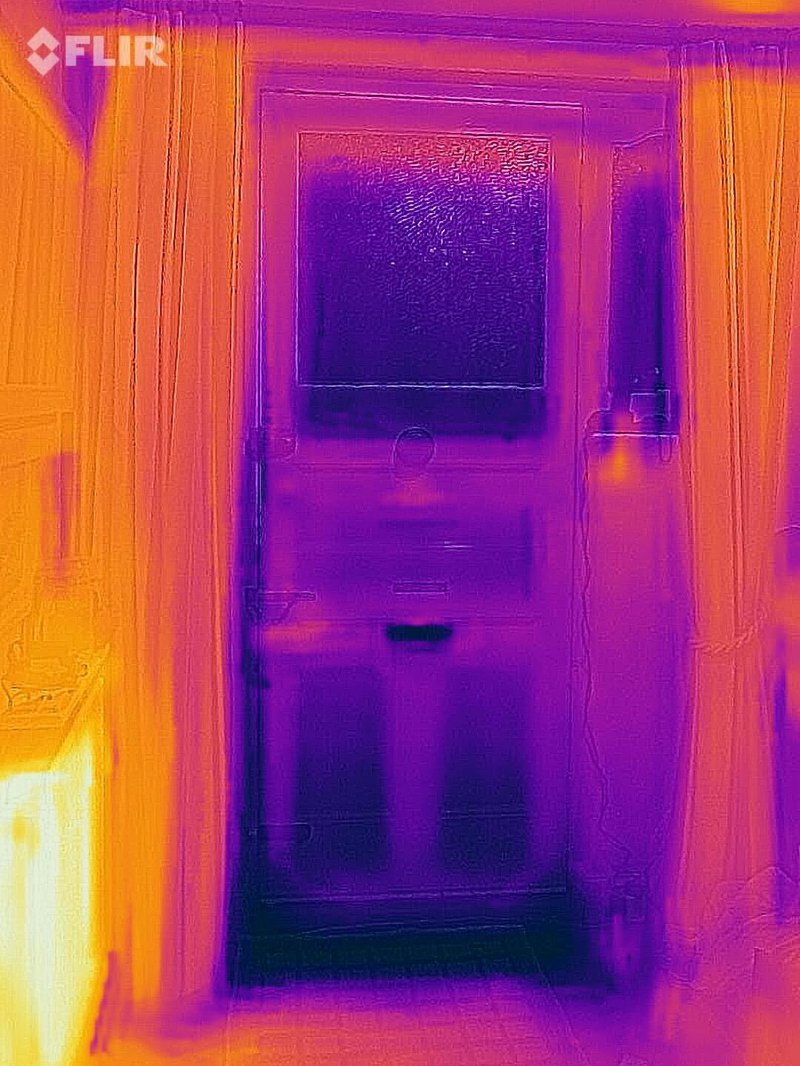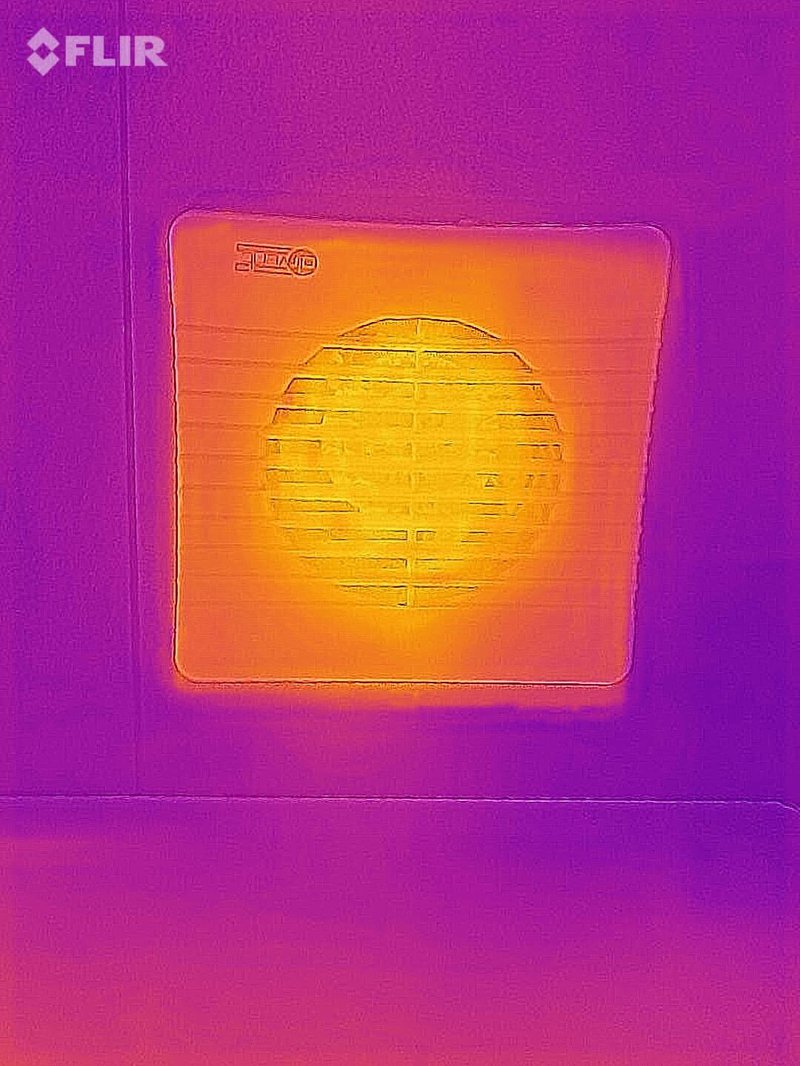The thermal cameras by FLIR systems, are super easy to use. We have loaned them to over 7,000 customers who have used them to find areas where heat may be escaping from their homes. We’ve put together a blog to help you make the most out of these brilliant cameras whilst you have it.
How to get started
- You simply plug them into your mobile phone.
- Which then connects the camera via bluetooth to the FLIR app that reveals the exact spots in your home where you’re losing heat.
- You’ll need a smartphone that is either iOS or an Android with a USB-C port (the cameras do not work with adapters).
- If you have been sent a wireless FLIR ONE Edge camera then you only need to connect to it via Bluetooth to start using it.
- From inside your home, darker, cooler spots show where cool air is coming in.
- From outside your home, reds, whites, and warmer colours show where heat is leaking out.
You might end up blocking particularly draughty windows, or sealing especially airy doorways.
What do the colours mean?
- Orange/yellow/white colours mean the area is warm – the brighter the colours are, the hotter the area is.
- Dark blue/purple colours mean the area is cold – the darker the blue, the colder the area is.
Whilst using your camera outside your home…
- You want to see the cold blue colours. This would mean your heating is being kept inside your house and you’re not wasting your energy use on heating the sky.
- If you see bright yellow/white colours on your walls, roof or windows, focus on these areas when looking to improve insulation.
Whilst using your camera inside your home…
- You want to see the warm yellow colours. This would mean cold air isn’t coming in and your heating isn’t escaping out.
- If you see dark blue colours, focus on these areas when looking for draughts to plug and areas to better insulate.
Doors
To block draughts at the base of your door, you can buy a cushion draught excluder (~£7) or make one by stuffing tights with socks, rice, plastic bags or any spare material you have. If you’re feeling a bit more creative, you can sew material into shape and fill with whatever you have available (here’s a tutorial on making your own draught excluder with stuff from around the house). The photos below show a draughty door – we know this because of the dark blue areas around the door. The photo on the right is lighter in colour at the base of the door where a draught excluder (a rolled up old towel) has been placed. The lighter colours show that the area is now warmer and the draught is being blocked. Easy remedy!


Draughty door without a draught excluder vs with a draught excluder
- If you’d prefer a fixed draught excluder, you can install a brush strip or hinged-flap draught excluder (~£7). Here’s a tutorial on how to install a brush strip draught excluder.
- For draughts around the edges of doors, use self-adhesive draught-proofing strips. Foam strips are the cheapest option (~£5) but may not be long-lasting. Other options include plastic or metal draught-proofing strips. Here’s a step by step guide on how to install self-adhesive draught-proofing strips.
- Letter boxes and keyholes can also be draught-proofed using a metal keyhole cover (~£3) and a letterbox brush/flap (~£5).
- Closing curtains in front of external doors helps to block the cold out and trap the heat in. The photo below on the left has lots of dark blue areas. This shows that cold draughts are coming in through gaps around the door frame and the window is poorly insulated (single glazed). The photo on the right, with the curtains closed, is much lighter in colour. This shows that the area is now warmer as the curtain is blocking the draughts out and trapping the heat in.


Draughty front door with curtains left open vs curtains closed
Unused rooms
- As heat naturally flows from warmer to cooler spaces until there’s no temperature difference, keeping the doors of unused and unheated rooms closed, saves wasting your valuable heating.
- A cushion draught excluder can also be used at the base of the door.
Extractor fans
- Leaving an extractor fan on can chill your whole house, so remember to turn it off when you’ve finished using it.
- You can get a timed extractor fan to help ensure it’s not left on unnecessarily.


Extractor fan left on vs extractor fan turned off
Chimneys
- If your chimney is still used, you can buy or make your own removable fireplace guard to help reduce the draught. You just need some spare plywood or thick cardboard cut to size and insulation tape/kitchen foil. Whilst the fire is off, fit it into place in your fireplace. Here’s an example of how to make a removable fireplace guard.
- A removable chimney balloon (£16) or a chimney draught excluder (~£22) can be placed up the chimney to prevent heat loss whilst the fire is off. If you use one of these, don’t forget to remove it before lighting the fire!
- If your chimney is no longer used, consider having it capped by a professional (~£150).
Floorboards and skirting boards
- Place a rug (or leftover cuts of carpet) over exposed floorboards to reduce draughts through the gaps.
- Filler can be used to seal gaps in your floor/around your skirting boards – it is best to use filler that can tolerate movement as the boards can contract and expand.
Radiators
- Radiators need space to heat your rooms – move any objects obstructing your radiators such as sofas, and ensure curtains don’t hang in front of them.
- Dust that builds up between the fins of radiators makes them less efficient – try to remove dust build-up using a vacuum and radiator duster (~£5). If you have radiator covers, here’s a step by step guide on how to remove them so you can access the radiator fins.
- Trapped air in radiators also reduces their efficiency – if there are cold spots on your radiators, it’s a sign they need bleeding to release trapped air. Here’s a tutorial on how to bleed your radiators.
- A shelf positioned just above a radiator helps to push heat forward into the room, rather than letting it rise to the ceiling. You can find easy to install, clip-on shelves in most hardware/DIY shops.
- Insert radiator reflector panels behind radiators (most effective on radiators located on external walls) to reflect heat back into the room, instead of letting the heat escape out through an external wall.
Hot water tanks and pipes
- A hot water cylinder jacket (~£15) can be fitted onto your hot water tank to reduce heat loss and therefore keep your hot water hotter for longer.
- Exposed hot water pipes can also be insulated using a foam tube that covers the pipes between your hot water cylinder and boiler.
Making changes to your home
If cold draughts are ignored, your heating has to work harder to keep you warm, increasing your energy bills and your carbon footprint… and no one wants that. So plug those draughts and stay warm this winter!
Good to know, the government currently has a ‘Green Homes Grant’ available to help reduce household energy use. The grant can help fund installing double/triple glazed windows, cavity wall insulation, roof insulation and more.
We’d love to see any nifty tips you come up with to stop those pesky draughts! Please share your photos with us on Twitter or Instagram @octopus_energy.
Check out what our customers are doing to improve their home insulation!
Grahame had cavity wall insulation, capturing great before and after photos. The photo below on the left shows Grahame’s house without cavity wall insulation. The bright colours indicate that a lot of his heating is leaking out through the poorly insulated walls. The photo below on the right shows Grahame’s house with cavity wall insulation. The walls are much darker in colour, showing that the external walls are now colder and significantly less heat is escaping out into the atmosphere. Cavity wall insulation can save you up to £160 a year on heating bills!


Grahame’s house with and without cavity wall insulation
Shanaka has made some budget-friendly insulation improvements around his home. Check out his 5 simple tips below!
Sarah has made a very useful video on how to use the FLIR One Edge camera
We’d love to know how you get on with your camera. Share any discoveries on Twitter or Instagram @octopusenergy.












